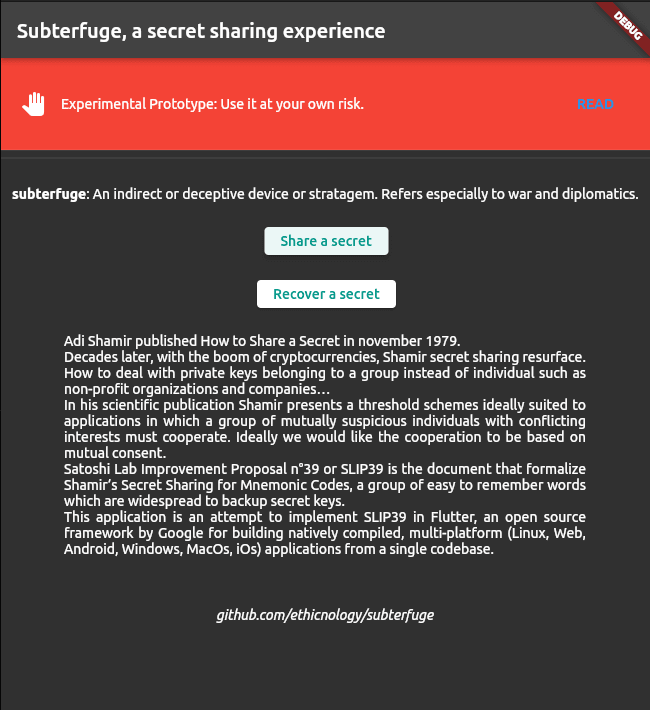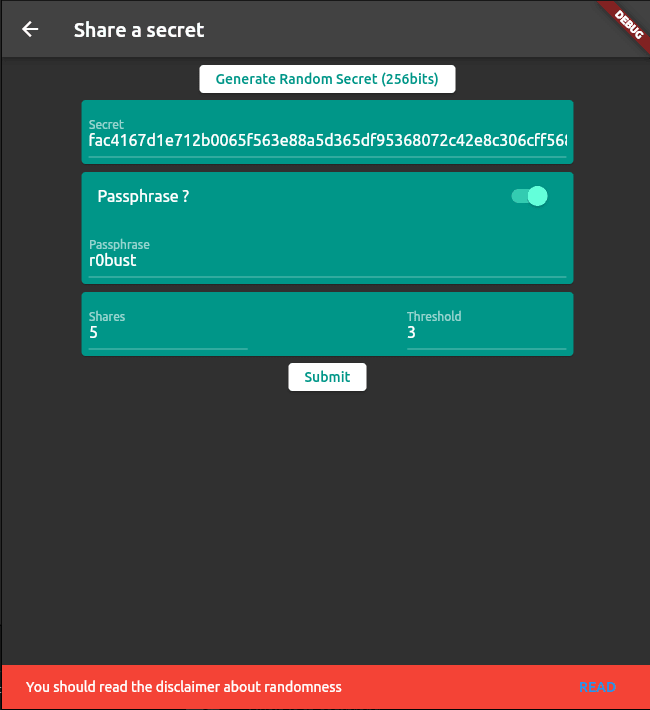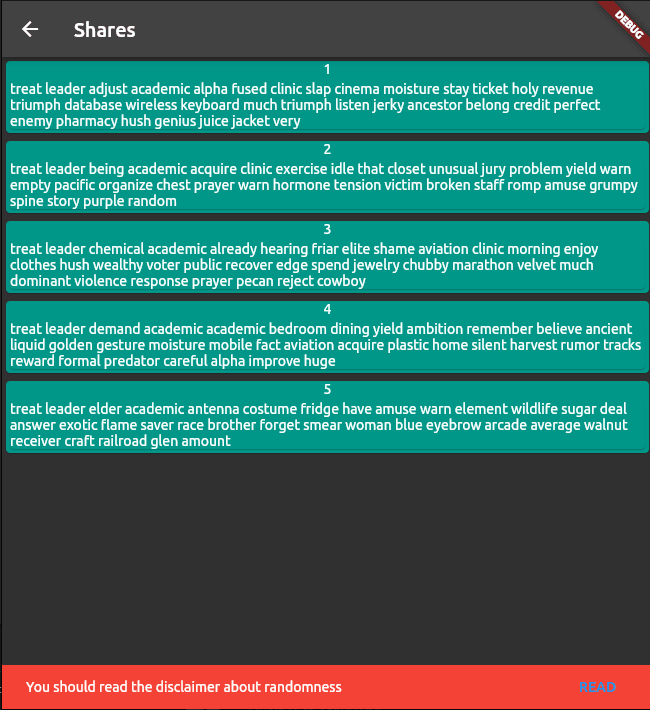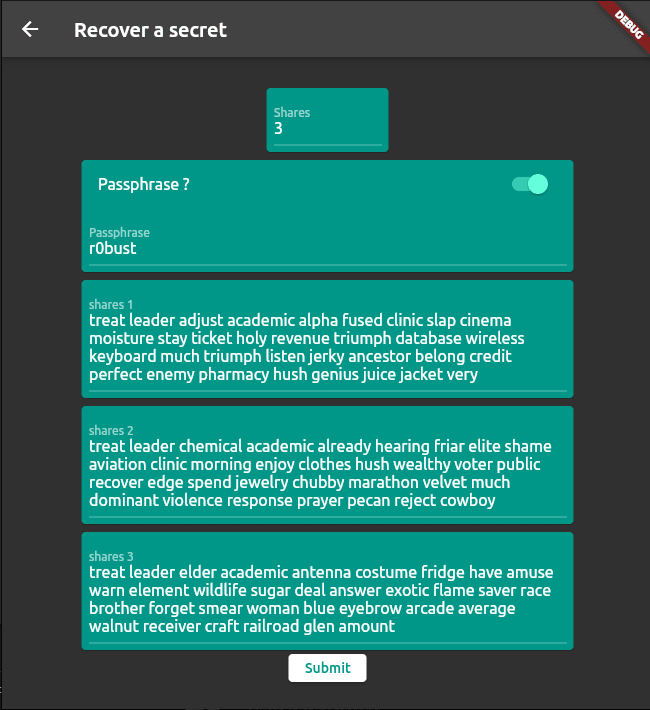






Adi Shamir published How to Share a Secret in november 1979. Decades later, with the boom of cryptocurrencies, Shamir secret sharing resurface. How to deal with private keys belonging to a group instead of individual such as non-profit organizations and companies… In his scientific publication Shamir presents a threshold schemes ideally suited to applications in which a group of mutually suspicious individuals with conflicting interests must cooperate. Ideally, we would like the cooperation to be based on mutual consent. Satoshi Lab Improvement Proposal n°39 or SLIP39 is the document that formalize Shamir's Secret Sharing for Mnemonic Codes, a group of easy to remember words which are widespread to back up secret keys. This application is an attempt to implement SLIP39 in Flutter, an open source framework by Google for building natively compiled, multi-platform (Linux, Web, Android, Windows, MacOs, iOs) applications from a single codebase.
You are about to open
Do you wish to proceed?
Thank you for your report. Information you provided will help us investigate further.
There was an error while sending your report. Please try again later.
Snaps are applications packaged with all their dependencies to run on all popular Linux distributions from a single build. They update automatically and roll back gracefully.
Snaps are discoverable and installable from the Snap Store, an app store with an audience of millions.

Snap can be installed from the command line on openSUSE Leap 15.x and Tumbleweed.
You need first add the snappy repository from the terminal. Choose the appropriate command depending on your installed openSUSE flavor.
Tumbleweed:
sudo zypper addrepo --refresh https://download.opensuse.org/repositories/system:/snappy/openSUSE_Tumbleweed snappy
Leap 15.x:
sudo zypper addrepo --refresh https://download.opensuse.org/repositories/system:/snappy/openSUSE_Leap_15.6 snappy
If needed, Swap out openSUSE_Leap_15. for, openSUSE_Leap_16.0 if you’re using a different version of openSUSE.
With the repository added, import its GPG key:
sudo zypper --gpg-auto-import-keys refresh
Finally, upgrade the package cache to include the new snappy repository:
sudo zypper dup --from snappy
Snap can now be installed with the following:
sudo zypper install snapd
You then need to either reboot, logout/login or source /etc/profile to have /snap/bin added to PATH.
Additionally, enable and start both the snapd and the snapd.apparmor services with the following commands:
sudo systemctl enable --now snapd
sudo systemctl enable --now snapd.apparmor
To install subterfuge, simply use the following command:
sudo snap install subterfuge
Browse and find snaps from the convenience of your desktop using the snap store snap.

Interested to find out more about snaps? Want to publish your own application? Visit snapcraft.io now.